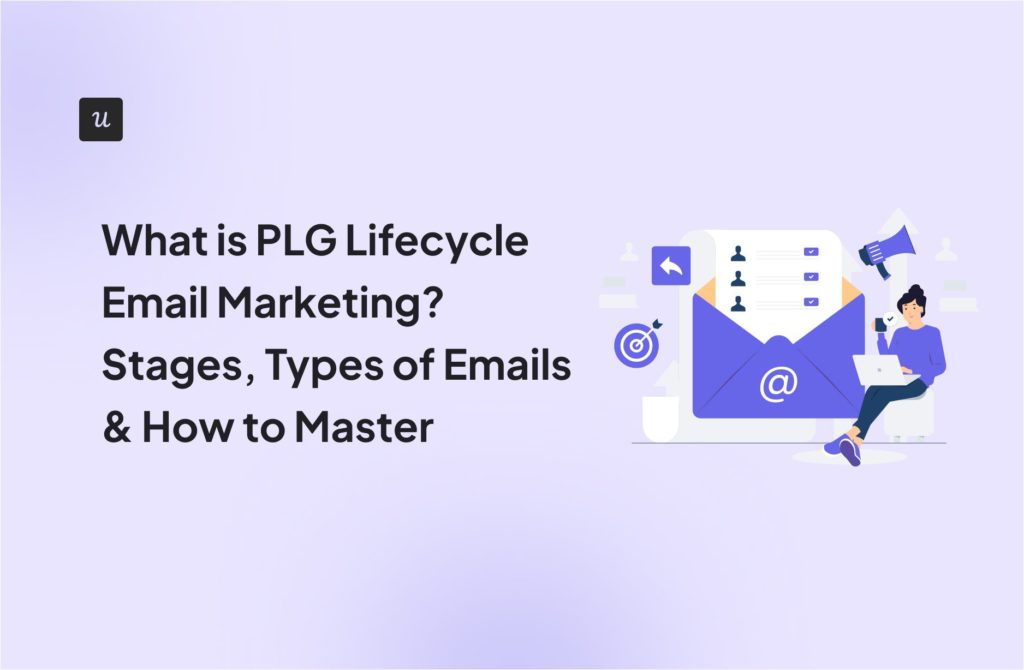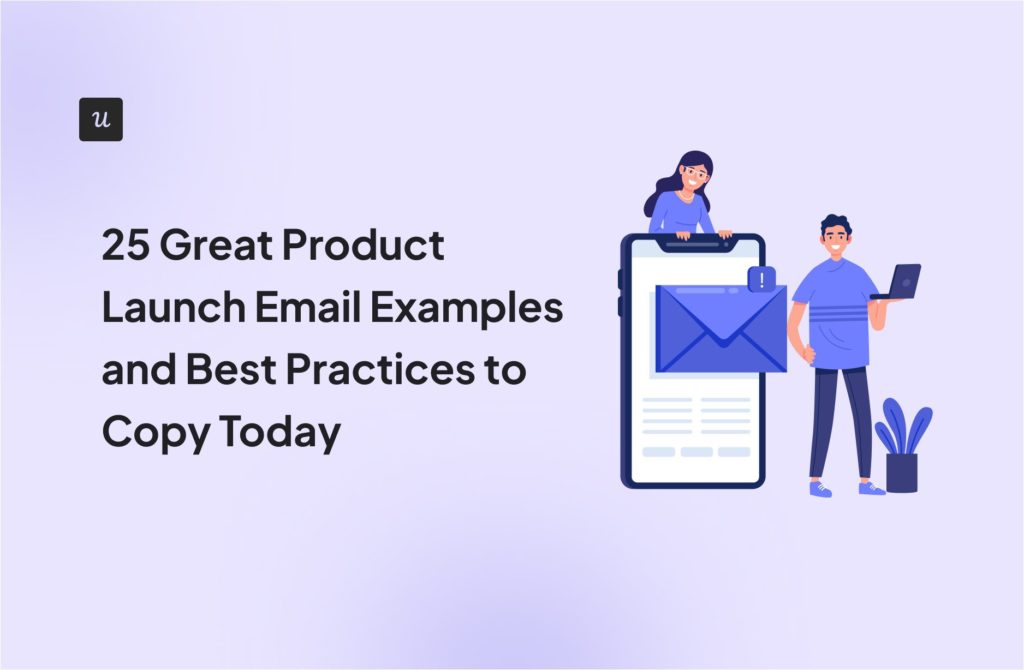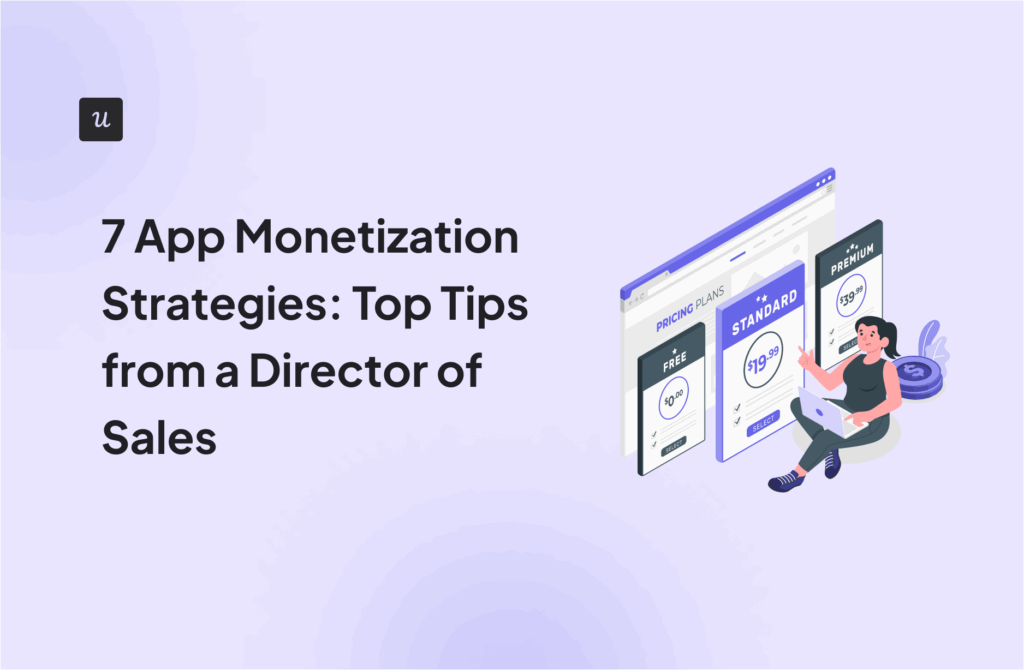
16 Top Product Marketing Tools to Elevate Your Brand in 2025
Looking for product marketing tools to attract, engage, and retain customers?
You’re in the right place. This article shows you:
- What to look out for in a product marketing tool.
- Different types of product marketing tools.
- 16 best product marketing tools and how they can help you drive growth.
Get The Insights!
The fastest way to learn about Product Growth, Management & Trends.
What is a product marketing tool?
A product marketing tool is any software, platform, or methodology that helps businesses effectively bridge the gap between a product and its target audience.
These tools typically offer features to help with various aspects of product marketing, such as market research, product messaging, content creation, email communication, etcetera.
What you should look for in a product marketing tool
There’s an extensive array of PM tools on the market, and choosing the right one can be difficult. Here are some core functionalities to look out for:
- Customization: This allows product marketing managers to tailor the tool to fit the unique aspects of their product marketing strategy and boost productivity.
- Feature set: From content creation to campaign management, look for a tool that offers a wide range of features, enabling product marketing managers to execute diverse strategies effectively.
- Ease of use: The tool should enhance the efficiency of product marketing efforts by being intuitive and easy to navigate. This reduces the learning curve for product marketing managers, allowing them to focus more on strategy and less on figuring out how to use the tool.
- Customer segmentation: This feature allows for more targeted and personalized product marketing strategies, enabling the marketing team to reach different market segments with tailored messages that resonate more effectively.
- Automation: Automation features in a product marketing tool can significantly streamline repetitive tasks. This not only saves time but also allows product marketing managers to concentrate on more strategic aspects of their roles.
- Integrations: Seamless integrations mean product campaigns can be more cohesive, and data can flow freely between systems, providing a more holistic view of the marketing funnel and customer journey.
- Analytics: A good tool should provide detailed insights and metrics, enabling product managers to track performance, optimize campaigns, and make data-driven decisions.
Different types of product marketing tools
Here are the most common types of tools among product marketers:
- Product marketing software: These tools help in understanding the market and competition, planning marketing initiatives, and tracking their effectiveness.
- Content marketing tools: CM tools assist with content creation (mostly writing), content management (like scheduling posts), and performance tracking (like analytics to see how content is performing).
- Customer data platform: CDP is a system that consolidates and organizes user data from various sources. It provides a unified, persistent database of customer profiles that product marketers can use for targeted marketing efforts.
- Customer feedback collection tool: From quick quantitative surveys to more in-depth customer interviews, these tools allow you to hear directly from users and make iterative changes.
- Marketing automation platform: These tools automate repetitive marketing tasks, such as email marketing campaigns, social media scheduling, lead nurturing workflows, and the like.
- Customer relationship management (CRM) tool: These platforms have features to let you manage interactions with current and potential customers. They store information on customer history, track leads, and provide tools for managing marketing programs.
- Keyword research platform: These tools equip you to find and analyze terms that people enter into search engines. The insights from this research can inform content strategy, marketing strategy, and SEO efforts.
- Project management tools: These help you plan, track, and manage your marketing projects easily.
- Product analytics tools: Think of these as your product’s X-ray. They help you track metrics like user engagement, feature usage, and churn rates to enable you to measure product performance and identify areas for improvement.
Best product marketing tools for product marketers
This section shows you some of the most robust tools every product marketer should have in their tech stack.
For each tool, we covered the key features and pricing information so you can make good buying decisions.
Userpilot: Best for in-app product marketing
Userpilot helps product marketers drive product adoption and engagement through guided in-app experiences.
Our platform also has analytics features to let you track user onboarding performance, understand user needs, and trigger flows to boost retention.

Userpilot features
- Different UI elements for user onboarding: Use modals, tooltips, checklists, slideouts, and other UI elements to communicate with users and drive action.
- No-code survey templates: Access a library of pre-built templates for Net Promoter score surveys, customer satisfaction surveys, and other in-app survey types.
- User behavior tracking: Records clicks, page views, feature usage, and other actions. Use the data to identify which product features are most popular and which ones are underutilized.
- User funnel analysis: Understand user flow through key conversion steps and identify areas where drop-offs happen.
- Cohorts analysis: Segment users based on several factors and analyze how different cohorts engage with your app.
- Path analysis: Track the sequence of actions users take through your app and spot trends.
- Survey Analytics: Track and analyze survey responses for actionable insights.
- Product usage analytics: See how new and existing customers engage with your tool and gather data to optimize the user experience.
- Analytics dashboards: Have your analytics report in intuitive dashboards that make it easy to interpret data and take action.
- A/B and multivariate testing: Experiment with different UI elements, content, and messaging. Gather data to optimize your app for maximum user engagement and conversion.
- Integrations: To improve your workflow and productivity, Userpilot integrates with popular product marketing tools like Amplitude, Intercom, Segment, Heap, and HubSpot. You can also use Webhooks to connect Userpilot with your app or third-party systems.
Userpilot pricing
- Free trial available.
- Starter Plan: From $299/month, billed annually,
- Growth Plan: Starts at $799/month, billed annually.
- Enterprise Plan: Custom pricing.
HubSpot marketing hub: Best for product marketing campaigns
HubSpot Marketing Hub is a comprehensive marketing platform that offers a suite of tools for creating, launching, and measuring engaging product campaigns.
The platform enables you to conduct email campaigns, track social media posts, and create landing pages, among other things. It basically equips you to reach your target market and drive product awareness.

HubSpot features
- Campaign builder: Easily create multi-channel campaigns with email, social media, landing pages, and more.
- Dashboard & reporting: Create personalized dashboards with any combination of charts, graphs, and tables. Use the dashboards to visualize key metrics like leads generated, customer acquisition cost, and campaign ROI.
- Integration: HubSpot integrates with Userpilot and tons of other apps to help you execute marketing campaigns that drive results.
HubSpot pricing
- Free plan available.
- Starter: From $18/month.
- Professional: From $800/month.
- Enterprise: From $3,600/month.
Amplitude: Best for product analytics
Amplitude is a leading analytics platform that helps product teams understand how users interact with the product and identify areas for improvement.
By tracking user behavior, measuring key metrics, and visualizing data insights, Amplitude empowers product marketers to make data-driven decisions about product development, marketing, and pricing.

Amplitude features
- Behavioral analysis: In-depth insights into how users interact with your product.
- Cohort analysis: Segment users based on actions and track over time.
- Customizable dashboards: Create visual dashboards to track key metrics and trends.
- Integration: Amplitude integrates with Userpilot and several other product marketing tools.
Amplitude pricing
- Free plan available.
- Plus: From $49/month.
- Growth & Enterprise: Custom pricing.
Google Analytics: Free tool for analytics
Google Analytics offers valuable insights into how users interact with your website and marketing campaign (s).
While not specifically designed for product marketing, it can be a powerful tool for understanding user acquisition, website engagement, and campaign performance.

Google Analytics features
- Traffic acquisition: Track website traffic sources, including organic search, social media, and referral links.
- User behavior: Analyze user behavior on your website, including page views, bounce rate, and time on site.
- Goal tracking: Define custom goals to track conversions and campaign performance.
Google Analytics pricing
- Free plan: This is the most popular plan and has almost everything a product marketer will need from a web analytics tool.
- GA 360: Custom pricing.
Custellence: Customer journey mapping tool
Custellence helps product marketers visualize and understand the different touchpoints along the customer journey.

Custellence features
- Drag-and-Drop Mapping: Easily create visual maps of your customer journey across all channels.
- Collaboration features: Invite team members and key stakeholders to leave comments on your maps. The permission setting allows you to determine the level of access each invitee has.
- Insight Integration: Incorporate data and insights directly into maps without having to worry about a cluttered interface.
Custellence pricing
- Standard: $0/month.
- Professional: $34 per member/month.
- Enterprise: Custom pricing
ClickUp: Project management platform
ClickUp is a versatile project management tool that helps product marketers organize, track, and manage their campaigns effectively.

ClickUp features
- Task management: Create and assign tasks, set due dates, track progress, and collaborate with team members in real-time.
- Communication and collaboration: Foster team communication with file sharing, comments, mentions, and chat functionality.
- Dashboards and reporting: Get visual overviews of project progress and key metrics.
- Integration: ClickUp integrates with 1000+ apps to boost productivity.
ClickUp pricing
- Free plan available.
- Unlimited: $7 per member/month.
- Business: $12 per member/month.
- Enterprise: Custom pricing.
Hotjar: Tool for customer behavior tracking
Hotjar allows product marketers to understand how website visitors and users interact with their platform.
By collecting heatmaps and session recordings, Hotjar provides valuable insights into the in-app behaviors of existing customers and target audience activity on websites, revealing opportunities to optimize the user experience and boost conversions.

Hotjar features
- Heatmaps: Visualize where users click, move, and scroll on your site.
- Session recordings: Record and replay user sessions to understand their experience.
- Feedback polls: Collect user feedback directly through your site.
Hotjar pricing
- Free plan available.
- Plus: $32/month.
- Business: $80/month.
- Scale: $171/month.
Segment: Customer data software
Segment is a customer insight platform that helps product marketers unify user data from multiple sources, creating a centralized customer profile.

Segment features
- Data collection and unification: Collect customer data from websites, apps, email, CRM, and other sources and have a complete view of customer interactions. The platform also has advanced segmentation to enable you to gain insights for good decision-making.
- Data governance and compliance: Manage user data responsibly with compliance tools and privacy controls.
- Integrations: Connect Segment with hundreds of analytics and product marketing tools for seamless data flow.
Segment pricing
- Free plan available.
- Team: $120 per month.
- Business: Custom volume and pricing.
MailChimp – Email marketing tool
MailChimp is a widely used email engagement platform that enables product marketers to create, send, and manage newsletters, automated messages, and targeted campaigns.

MailChimp features
- Email campaigns: Design and send email newsletters with customizable templates.
- Advanced segmentation: Target emails based on user demographics and behavior.
- Analytics and reports: Track campaign performance with detailed reports.
MailChimp pricing
- Free plan available.
- Essentials: Starts at $6.50/month.
- Standard: Starts at $10/month.
- Premium: Starts at $175/month.
Proprofs Survey Maker: Tool for product marketers to gather feedback
ProProfs Survey Maker is an easy-to-use tool that allows businesses to create and distribute surveys to collect user feedback, gather insights, and make data-driven decisions.

Proprofs Survey Maker features
- Customizable surveys: Create surveys with various question types and customization options.
- Distribution: Share surveys via email, social media, embedding on websites, or pop-ups. Reach a wide audience and collect feedback effortlessly.
- Reports and analytics: Analyze responses with real-time reports.
Proprofs Survey Maker pricing
- Free plan available.
- Essentials: $20/month.
- Business: $40/month.
- Business+: $200/month.
Typeform: Tool for customer feedback collection
Typeform specializes in creating interactive forms, surveys, and quizzes that are aesthetically pleasing and user-friendly, enhancing customer engagement.

Typeform features
- Conversational forms: Build engaging forms with a focus on user experience.
- Templates and customization: Access a wide range of templates with extensive customization options.
- Integrations: Connect with various tools for data analysis and marketing.
Typeform pricing
- Free plan available.
- Basic: $25/month.
- Plus: $50/month.
- Business: $83/month.
- Enterprise: Custom pricing.
Monday.com: Product management tool for product marketing teams
Monday.com is a flexible project management platform that helps product marketing teams organize, track, and collaborate on campaigns, initiatives, and product launches.

Monday.com features
- Visual boards: Organize tasks, projects, and campaigns using boards with colorful cards and customizable views.
- Workflow Automation: Unlike most product management tools, Monday.com allows you to automate repetitive tasks like sending reminders, updating statuses, and assigning work based on triggers and conditions.
- Collaboration tools: Discuss tasks, share files, and provide feedback directly within boards and cards.
Monday.com pricing
- Free plan available.
- Basic: $9 per seat/month.
- Standard: $12 per seat/month.
- Pro: $19 per seat/month.
- Enterprise: Custom pricing.
Monday.com also has a free trial for any product marketer interested in testing the Pro before upgrading.
Slack: Tool for communication
Slack is a popular collaboration platform that enables teams to communicate effectively, share information, and stay organized.

Slack features
- Real-time messaging: Communicate with team members quickly and easily through individual chats or group channels.
- Channel organization: Create dedicated channels for different projects, campaigns, or topics to keep conversations organized.
- Integrations: Connect Slack with product marketing tools, project management platforms, and other software for centralized collaboration.
Slack pricing
- Free plan available.
- Pro: $7.25 per active user/month.
- Business+: $12.50 per active user/month.
- Enterprise grid: Custom pricing.
Omnisend: Tool for omnichannel customer communication
Omnisend is an omnichannel marketing automation tool that allows product marketers to reach customers across multiple channels (email, SMS, push notifications, etc.) with personalized and automated messages.

Omnisend features
- Omnichannel campaign creation: Design and automate personalized campaigns across email, SMS, push notifications, and more.
- Segmentation & Personalization: Tailor messages based on customer behavior and preferences.
- Automation capabilities: Automate email sequences, welcome messages, trigger-based campaigns, and personalized product recommendations.
Omnisend pricing
- Free plan available.
- Standard: $16/month.
- Pro: $59/month.
SurferSEO: Tool for product content creation
SurferSEO is an on-page optimization tool designed to help product marketers create content that ranks highly in search engine results pages (SERPs).

SurferSEO features
- Content optimization: Analyze SERP results for targeted keywords and identify key elements like word count, topic coverage, and keyword density.
- Editor: Utilize the in-line content editor to receive real-time feedback on your content as you write, including suggestions for keywords, topic clusters, and sentence structure.
- Content audit: Analyze existing content to identify areas for improvement and ensure alignment with current SEO best practices.
SurferSEO pricing
- Essential: $89.
- Scale: $129 per month.
- Scale AI+: $219 per month.
- Enterprise: from $399.
SurferSEO used to offer a 7-day free trial, but not anymore. They now offer a 7-day money-back guarantee if the tool wasn’t what you expected.
Ahrefs: Best for keyword research and content marketing
This platform is a comprehensive SEO suite that offers a wide range of tools for keyword research, backlink analysis, content research, and competitive analysis.

Ahrefs features
- Audience research: Discover high-volume, low-competition keywords relevant to your target audience and product offerings.
- Content research: Identify high-performing content on specific topics, understand content gaps in your niche, and generate content ideas based on audience interests.
- Competitive analysis: Analyze your competitors’ websites, compare your performance, and identify areas for improvement in content, SEO, and overall online presence.
Ahrefs pricing
- Lite: $99 per month.
- Standard: $199 per month.
- Advanced: $399 per month.
- Enterprise: $999 per month.
Like Surfer, Ahrefs used to offer a free trial, but not anymore. Interested users can access the platform’s free Webmaster tools instead.
Conclusion
While each tool in this article is important, you don’t need all of them to build a successful product marketing strategy. Take some time to consider your current needs and the areas you struggle with the most—that’s what should determine the software to add to your tool stack.
Userpilot can help if you’re looking for the best product marketing tools for creating in-app experiences to drive adoption and continuous engagement. Book a demo to discuss your needs with our team.







